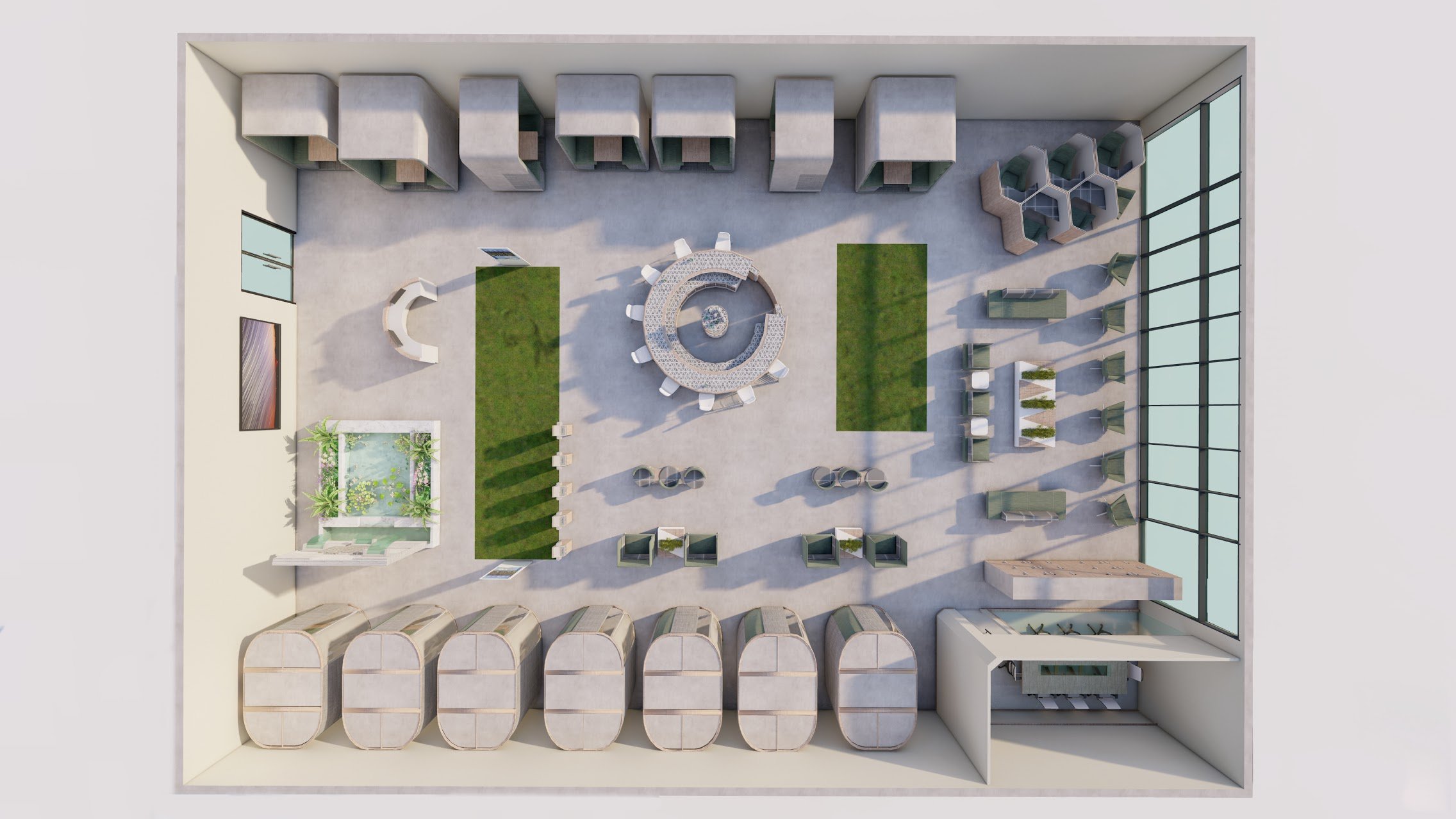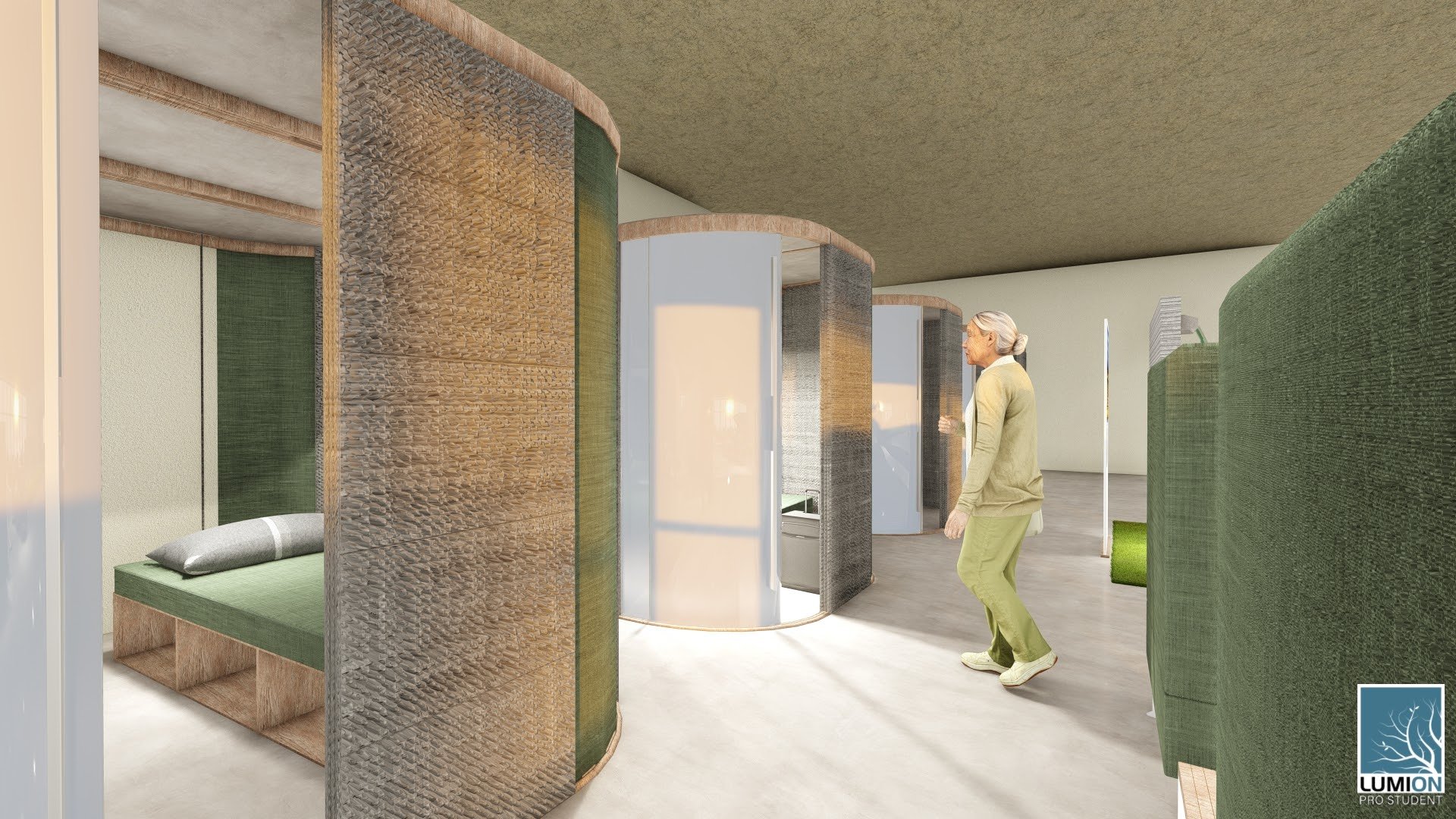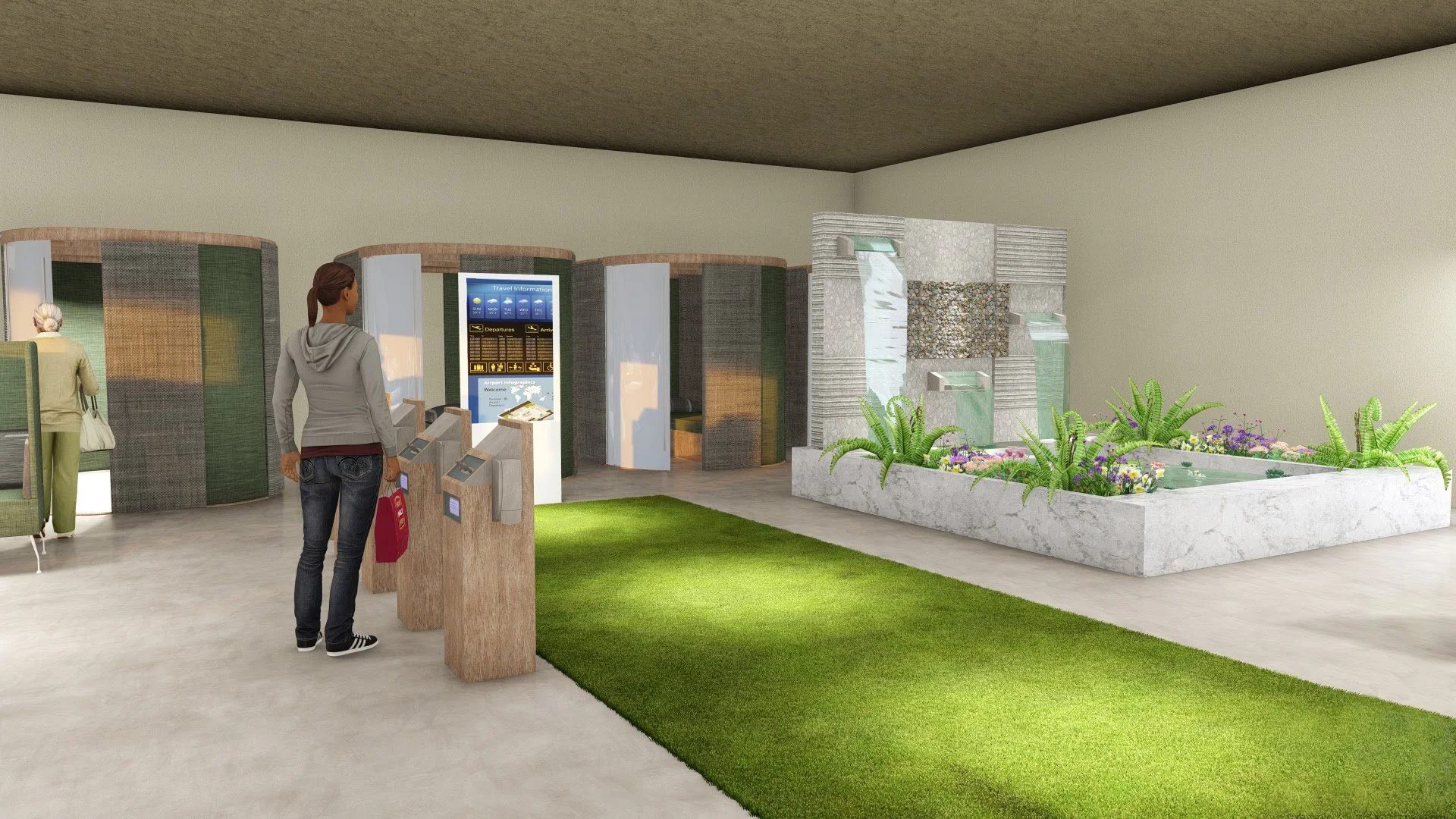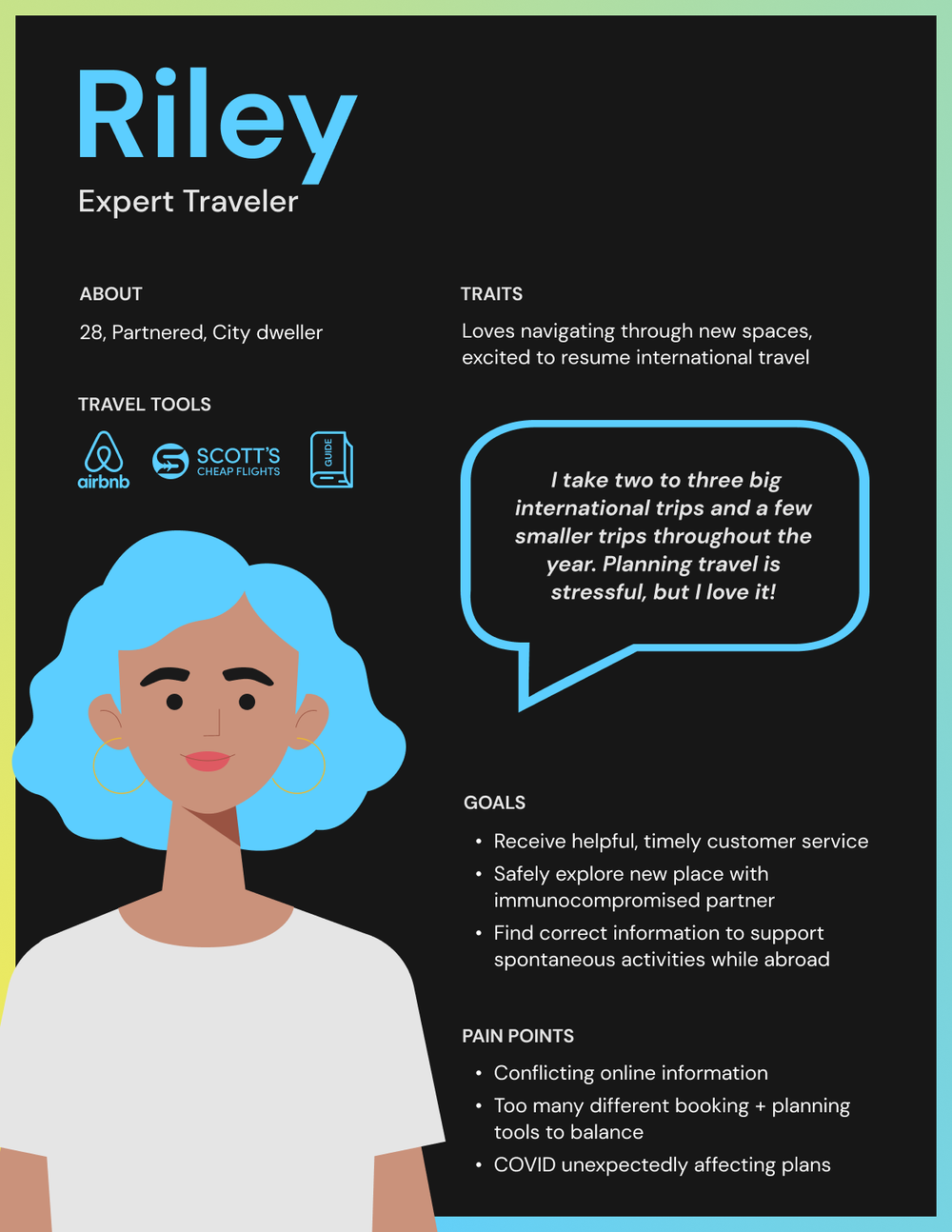
Numi by
Exploring the Future of Post-Pandemic Travel
Team: Sara Behbakht, Sara Gustafson, Kathy Nguyen + Yossi Avnon, UX Research Lead @ Expedia
Duration: 6 months
Role: Student UX Researcher
Tools: UserResearch.com, Figma
Scope: UX Research + Design
Numi by Expedia is a design system to reduce the pain points often associated with international travel experiences.
It includes a mobile application, physical lounge space, and IoT technologies.
Set 5 years in the future, Numi accounts for what travel may look like once the world has recovered from the COVID-19 pandemic.
DESIGN QUESTION
How might we re-imagine the international travel experience for young travelers w/ consideration to post-pandemic conditions?
Research
To understand our users of travelers ages 20-30 years old, we carried out 13 user interviews, market research, and surveys. With this data, we spent long qualitative coding and thematic analysis sessions, then affinity mapping. These methods allowed us to gather insights on our users to guide us to a data-backed design solution.
surveys
market
research
user
interviews
From market analysis and insight from our Expedia sponsor, Yossi, on current travel trends, we developed a set of exploratory questions to structure our user interviews and surveys around.
RESEARCH QUESTIONS
What information will post-pandemic travelers need to know to travel comfortably?
What do people need to feel safe traveling?
What are users’ attitudes about current and future travel?
What do people value in a travel experience?
What are users’ motivations for current and future travel?
Surveys
Our survey asked fifteen questions, from multiple-choice to ranking to short answer. We leveraged our personal networks, LinkedIn, Facebook, Slack, Listservs, and Reddit, to recruit participants. We reached 171 people, with 119 completed, viable surveys. Using our survey data, we affinity mapped to understand the larger themes.
User Interviews
We independently scheduled and conducted 13 participant interviews via Zoom. After qualitatively coding all 13 interviews, we affinity diagrammed to uncover insights. Using these insights, we began to mold our research themes.
During our user interviews, we asked each participant to sketch their personal hopes for the future of travel.
VOILÁ —
RESEARCH FINDINGS
Travelers ages 20-30…
Desire autonomy over their travel plans.
Cross-reference formal & informal information resources when traveling.
Feel uncomfortable with close proximity to others.
Have hope for future travel innovations inspired by their experiences.
Our analysis led us to a set of four valuable findings to take us into the design phase.
From our research, we found that a significant number of our user had domestic travel experience, but were waiting for the pandemic to end for their first international trips. We represented these users with Dillon, our novice traveler persona.
Persona: the never-been-abroad traveler
We also created Riley to represent our users who are travel-savvy and confident when it comes to booking and taking off on trips. However, we ultimately decided to leave Riley behind before moving onto journey mapping, because we found she did not need much further support.
Persona: the seasoned traveler
Design Requirements
From here, we finally collected enough information to create design requirements for our future product. With these design requirements, we crafted guiding principles for our design moving forward.
Update travelers in real-time about scheduling issues, like delays and cancellations.
Allow travelers to customize COVID-19 updates & receive on-the-go health suggestions.
Help travelers make informed, culturally appropriate decisions when planning activities.
Empower travelers to navigate high-traffic spaces with confidence about cleanliness.
Support travelers’ flexibility when booking and adjusting accommodations while remaining in-budget.
Provide sustainable, long-term support for travelers of all experience levels.
Design
In the design phase of the Numi project, I translated research insights into practical design solutions. I began by developing an information architecture to structure our solution. Building on this foundation, I created mockups to visualize key interface elements and interactions. After refining these designs, I moved on to high-fidelity prototypes to test and validate the user experience, focusing on creating an intuitive and seamless interaction flow.
Mockups
Prototyping
Usability
Testing
I outlined the flow of key tasks within the Numi app, from trip planning to account management.
I separated user interactions into distinct categories such as Trips, Explore, Lounge, and Account, ensuring clarity for users at all stages of their journey. The flow highlights user actions like booking trips, creating budgets, reserving lounges, and editing profiles, with clear decision points and confirmations to streamline the process.
Info
Architecture
Info Architecture
Wireframes
Next, I developed wireframes for each screen included in the information architecture, showcasing my user interface (UI) ideas without a design system. I wireframed each user flow and added other elements and features to supplement usability testing later on in the process.
Usability Testing
To inform design improvements, I conducted two rounds of iterative usability testing using Maze and UserTesting.com.
In round one of usability testing, Maze provided fast, quantitative insights into the effectiveness and intuitiveness of my UI, where I tested simple tasks with 10 participants. By analyzing success rates, misclicks, and time spent on each screen, I was able to prioritize key areas for redesign before moving into the second round.
With UserTesting.com, I leveraged the capabilities of the platform to explore users' thought processes as they navigated tasks. This allowed me to further refine interactions, ensuring the design aligned with user expectations before finalizing the solutions.
Interactive Prototyping
Lastly, I finalized our design solution with interactive prototyping of the Numi app and in-airport UI, and hi-fi mockups of the in-airport lounge, the Numi Room.












